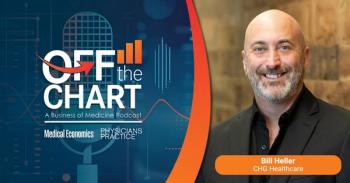
Understanding physician compensation caps
Physician compensation caps are a relatively new phenomenon but one that is likely to grow as more physicians become employees instead of independent practitioners. Here's what you need to know about them and how they could affect your career.
Compensation caps were developed as a result of healthcare organizations’ concerns about violating anti-kickback statutes, the Stark law, and IRS inurement regulations. Typically the cap is set at a specific percentile-90th percentile is a common choice-of national pay based on surveys, such as those from the
They can affect physicians in any specialty because they each have their own benchmarks for what is fair market value. A surgeon might earn more than a pediatrician, but they aren’t being compared to one another.
Related:
“Hospitals get concerned around fair market value for compensation to physicians so that’s where the caps really begin to come into play,” says Mark Mertz, MHA, FACMPE, vice president of
These organizations are worried that the government would say a physician is earning far more than market value, and claim this is occurring to entice the physician to send more referrals to the hospital, he adds.
“The IRS looks at the tax return that comes from the organization and asks if the salaries being paid to administrators and other high earners are reasonable for an organization that basically isn’t paying taxes,” says Jeff Milburn, MBA, of the
He says the issue can generate even more confusion today because compensation caps in the past were based on a fee-for-service model. As value increasingly enters the reimbursement equation, many terms are being redefined as contracts come up for renewal.
“Incentive plans will start to include quality measures such as patient satisfaction that have to be factored in and justified in relation to how you are paying the doctor,” Milburn says. “Let’s say 80 percent of the plan is based on productivity and the doctor is doing fine on that part, but when you add the incentive plans, it can blow the doctor through the cap.”
How caps work
Milburn says the physicians who are most likely to encounter caps are those working in a productivity model. The caps can be “hard,” a definite stopgap on paying anyone over a certain percentile of a certain survey. Or they can be “soft,” which means that the physician and the employer agree that if a physician is hitting a cap, his or her work will be reviewed by a healthcare attorney or a compensation committee to see if the pay is justified. This leaves the door open to saying the physician is indeed a high producer and deserves the compensation he or she is receiving.
Mertz agrees that most of the physicians that will worry about this are highly productive.
“Just because a physician’s pay falls at a certain percentile does not necessarily mean it is inappropriate,” Mertz points out. “Sometimes attorneys take this black-and-white approach and say ‘If it is above 90th percentile, it is in violation.’ But the nature of statistics means that someone is above 90th percentile. If you are in the 95th percentile for productivity and have great patient satisfaction, then there is no reason that you shouldn’t earn in the 95th percentile.”
“If you are going to exceed the cap, document it and consider supporting it with a letter from your healthcare attorney or fair market value consultant,” says Milburn. Keep this documentation on file so that if any questions arise from an outside regulatory authority, you are prepared.
Mertz explains regulators want to make sure a hospital isn’t giving 90th percentile compensation to a physician whose productivity is at about the 25th percentile, for example.
“If there is a significant disconnect between the work that physicians are doing and the compensation they earn, that’s where there is a concern, as opposed to someone who is blowing the doors off doing great work and who deserves the money,” he says.
Exploring the reasons
If a physician is consistently hitting a percentile cap, Milburn suggests that the physician’s employer explore the reasons.
“Is the doctor really a hard worker? I have been in situations where the doctor just doesn’t have a life and he works five or six days, pulls call on the weekends, and lives to work. Usually it’s your more senior physicians,” he says. “This is kind of a generational gap. Senior physicians live to work. Younger physicians work to live. They want a family life and things like that. It is just something you have to deal with.”
Milburn says that another reason a physician could be surpassing a cap is excess patient demand, such as if the physician is the only obstetrician in a region. An additional possibility is that a physician is upcoding in ways that are not supported by the documentation or might be billing separately for procedure codes that are supposed to be bundled.
“A few physicians might be doing it to game the system, but mostly it is inadvertent, and the physician just may need to be educated about proper billing,” Milburn says. It also is possible that the compensation plan is just not structured properly, he says.
Avoid an end-of-year surprise
Milburn says that one of the problems with a rigid cap is that when the physician hits it, he or she has no financial incentive to keep working.
“Let’s say you have an annual cap and a highly productive physician hits it in October. Does the doctor take November and December off? That really hurts from a coverage point of view and patient access,” he says.
To avoid that problem, he suggests that nonprofits set up a monthly or quarterly cap with a rolling reconciliation. This allows the physician to take a few days off throughout the year if he or she is exceeding the compensation limits.
Related:
Another way to regulate is by adjusting the conversion factor; for example, using RVUs as the measure of productivity. For example, two physicians may work for the same organization but at different locations. One may primarily see patients who are covered by Medicaid and another may see more patients with commercial insurance. They may be working equally hard but bringing in very different amounts of revenue, so using RVUs is a more fair way to compare actual productivity.
“That is the ideal measure for me because it takes out the payer mix,” Milburn says.
Getting an outside opinion?
With so many changes occurring in healthcare today, Mertz recommends that physicians facing new or renewed agreements consider having them evaluated externally, especially if they contain significant changes.
“In the past, compensation plans wouldn’t be altered for years at a time, but now they are being re-evaluated on almost an annual basis because the market is so dynamic,” he says.
How percentile benchmarks are determined
The data used to develop the benchmark for percentiles of national physician salaries can come from several sources. Probably the best known is the Medical Group Management Association’s (MGMA) annual survey. The American Medical Group Association also conducts a major survey, as does the consulting firm Sullivan Cotter and others.
Some nonprofits choose to blend the findings from several sources to obtain a median for each specialty. “It probably is not good statistical analysis, but it is easy to explain to the doctors,” Jeff Milburn of the MGMA says.
When Milburn is calculating numbers for a client, he sometimes uses an average of the past three years of a survey so as to reduce year-to-year variability. He also looks at a variety of factors. For example, the bulk of a physician’s pay might be from salary or productivity, with another 10% coming from quality incentives and 5 to 10% for administrative duties. “There are many ways to structure a compensation plan,” he says.
The most recent version of MGMA’s survey was published in June, and contains responses from almost 70,000 providers from around the country. Respondents include medical groups, hospitals and health systems/integrated delivery systems, as well as some consulting firms, management service organizations, and physician practice management companies.
The survey assesses physician and nonphysician provider compensation and production data including total compensation, retirement benefits, bonus amounts, RVUs, collections, encounters, etc. Data were collected from January 26 through March 14 through online surveys or Excel uploads, according to MGMA.
Newsletter
Stay informed and empowered with Medical Economics enewsletter, delivering expert insights, financial strategies, practice management tips and technology trends — tailored for today’s physicians.








